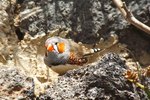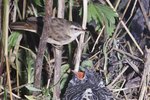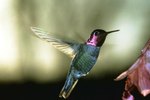
Rockhopper penguins (Eudyptes chrysocome) are family-oriented birds. They mate in monogamous pairs and work together to raise their chicks until the babies can care for themselves. Rockhoppers instinctively look after their young and even help out other parents by caring for young in creches, which are like penguin nurseries.
Reproduction
Rockhopper penguins are lifelong monogamous animals. Every October reproductively viable rockhopper penguins gather in huge colonies to carry out their mating rituals. Rockhoppers mate with the same partner at the same nest every year. The males arrive at the colony first and rebuild the nest as necessary to get it ready for the female's arrival. As soon as she meets her partner at the nest, mating begins. Then the females lay eggs in mid-November.
Incubating the Eggs
From the time the eggs are laid, rockhoppers aggressively protect the nest, even from other members of the breeding colony. Each female rockhopper normally lays two eggs. The first egg is almost always smaller than the second. The second egg is given the safest, warmest spot in the nest to help ensure its survival. In eastern and northern rockhoppers the first egg almost never survives, but is more likely to make it to the fledgling stage in southern rockhopper colonies. The eggs incubate for just over one month. The incubation process is split into three equal parts. In the first part, both parents attend the nest. During the second part, the female penguin incubates while the male ventures out and feeds. Then when the male returns the female is free to come and go and the male stays with the nest until the eggs hatch.
Fledglings
After the chicks hatch, the father penguin broods the eggs for three and a half weeks while the mother penguin ventures out to collect food and bring it back to her family. Newborn chicks are covered in fluffy, downy feathers. The chicks may go as long as a week after birth before they receive their first meal when the mother returns. During that time they subsist on yolk reserves. If the mother penguin doesn't return with food, the father regurgitates a substance produced in his crop called "penguin's milk" and feeds it to the baby. In normal feeding, the parent regurgitates partially digested food such as fish and shrimp into the baby's mouth. After 25 days of brooding, the chicks are strong enough to venture outside the nest. They can then be cared for communally with chicks from other nests in creches. This frees up both parents to seek out food for the family.
Juvenile Penguins
It takes about 10 weeks until the baby penguins are fully fledged, when they replace their downy feathers with waterproof ones. Until they reach adulthood, young rockhoppers don't display the characteristic yellow plumage and bright orange beaks of their elders. When the chicks begin to molt, the juvenile rockhoppers join the colony and also molt. The juveniles have faint yellow stripes above their eyes and dark brown beaks, signs that they have a few years before they reach reproductive years. Generally rockhoppers don't mate until they're 4 to 5 years old. Development of full plumage is an indicator that rockhoppers are ready to reproduce.
References
Resources
Photo Credits
-
Jupiterimages/Photos.com/Getty Images
Writer Bio
Madeline Masters works as a dog walker and professional writer. In the past she has worked as a fitness columnist, fundraising copywriter and news reporter. Masters won two Pennsylvania Newspaper Association Awards in 2009. She graduated from Elizabethtown College with a Bachelor of Arts in English.




